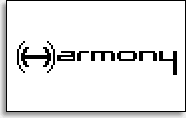|
Remember the old adage, “good things come in small packages”? Although the photos in this review might lead you to believe otherwise, the newest Harmony remote control from Intrigue Technologies (formerly Easy Zapper) most certainly fits the bill as a small package... and in this review we’re going to discover just how much good stuff is in there!
The first Harmony remote (read all about it here), originally unnamed but since dubbed the SST-745, proved to be an admirable concept held back mainly by an unconventional implementation. Although the remote’s size was small and the number of buttons few – exactly what Intrigue was after – cost concerns caused the Harmony to appear as though it had been assembled from stock cell phone parts.
Intrigue Technologies realized that they had a great idea that really needed a complete makeover before it could become a successful mainstream product. Partnering up with another remote OEM with more design and manufacturing experience, in the last year the Harmony has matured from a duckling into an elegant swan.
Obviously the outside isn’t all that matters here – in the end it’s what’s under that stylish new case that really counts.
So what’s all the fuss about?
The operational goal of the Harmony is to turn any number of audio/video components into a single, easy-to-control device. “But,” you might say, “isn’t that what all universal remote controls are supposed to do?” Not exactly. With economical remotes – the type you’ll find sealed in those impossible-to-open plastic bubbles at mass merchants – the goal is to simply consolidate control of a specific number of original factory remotes into a single unit, thus reducing clutter. These products operate much like multiple remote controls all jammed into the same case: press “TV” to control the television, “Amp” for the amplifier. Some cross-linking might be accomplished with macros or punchthroughs, but generally only one device is controlled at a time.

A sample of common activities.
|
The Harmony is, at its heart, an activity-based remote. Which means that users select plain-English tasks to perform, such as “watch television” or “play a DVD”, and are presented with only needed controls, such as receiver volume and audio modes, DVD transport and television picture modes. Although other activity-oriented remotes have been released in the past, the Harmony is the first to really run with the concept. And, while all higher-end remotes can be reprogrammed to operate in an activity-based manner, such offerings rely on the programmer (you!) to figure out exactly what needs to be done. This route usually goes against the grain of what the designers originally intended and can create a lot of extra work.
If that isn’t enough to convince you that the Harmony is an operationally unique product, remember that it’s also the only remote in its price range to include what Intrigue calls “Smart State Technology”. Put into simpler terms, “Smart State Technology” is essentially internal variables stored in the remote that remember how the A/V system has been configured. So, if the remote has already turned on the TV, it knows this and doesn’t try to turn it on again.
| 
